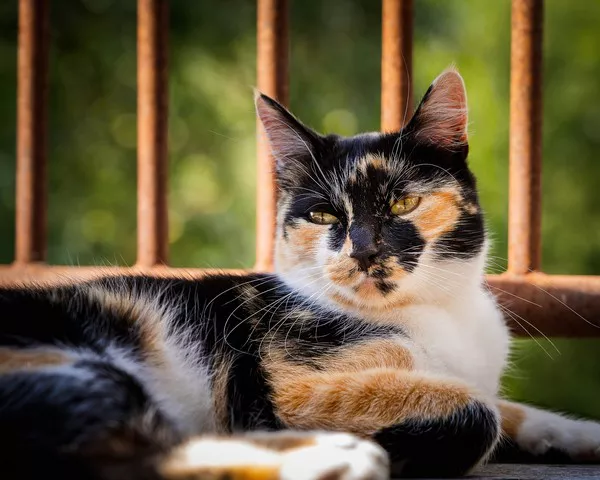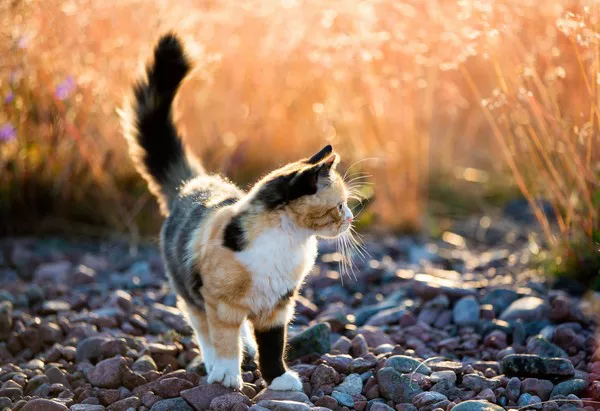Calico cats, known for their distinctive tri-color coats, are beloved companions cherished for their unique personalities and beauty. As with any kitten, ensuring proper growth and development is essential during the crucial early months of life. This comprehensive article explores how much a 4-month-old calico cat should weigh, factors influencing weight gain, and practical feeding tips to support their health and well-being.
Understanding Feline Growth and Development
Early Growth Stages
During the first few months of life, kittens undergo rapid growth and development. Proper nutrition, adequate hydration, and regular veterinary care are critical for ensuring they reach their full potential.
Weight Milestones
While there is some variability in weight among individual kittens, certain milestones can serve as general guidelines for healthy growth. These milestones are typically based on age and breed.
Determining the Ideal Weight for a 4-Month-Old Calico Cat
Average Weight Range
At 4 months of age, a calico kitten should typically weigh between 3.5 to 5.5 pounds (1.6 to 2.5 kilograms). However, it’s important to note that individual factors, such as genetics, diet, and activity level, can influence weight variation within this range.
Body Condition Score
In addition to weight, assessing a kitten’s body condition score (BCS) can provide valuable insights into their overall health and nutritional status. A healthy 4-month-old calico should have a moderate body condition, with a visible waistline when viewed from above and palpable ribs with minimal fat covering.
Factors Influencing Weight Gain in Calico Kittens
Genetics
Genetics plays a significant role in determining a kitten’s growth rate and adult size. Calico cats come in various sizes, and individual growth patterns can vary based on genetic factors inherited from their parents.
Nutrition
Proper nutrition is crucial for supporting healthy growth and development in kittens. A well-balanced diet that meets their specific nutritional needs is essential for ensuring they reach their optimal weight and size.
Health and Wellness
Factors such as underlying health conditions, parasite infestations, and stress can impact a kitten’s appetite and weight gain. Regular veterinary check-ups and preventive care are essential for identifying and addressing any health issues promptly.
Feeding Tips for a 4-Month-Old Calico Kitten
Selecting the Right Food
Choosing a high-quality kitten food formulated to meet the unique nutritional needs of growing cats is essential. Look for products labeled as “complete and balanced” and specifically designed for kittens.
Feeding Frequency
At 4 months of age, a calico kitten typically requires three to four meals per day. Dividing their daily food allowance into multiple smaller meals helps prevent overeating and promotes healthy digestion.
Portion Control
Follow the feeding guidelines provided on the kitten food packaging to determine the appropriate portion size for your calico kitten’s age and weight. Avoid overfeeding, as excess weight gain can lead to health problems later in life.
Hydration
Ensure your kitten has access to fresh, clean water at all times. Hydration is essential for supporting healthy digestion, kidney function, and overall well-being.
Transitioning to Solid Food
By 4 months of age, most kittens have transitioned from nursing to eating solid food. If your calico kitten is still nursing or transitioning to solid food, offer a combination of wet and dry kitten food to meet their nutritional needs.
Monitoring Weight and Growth
Regularly monitor your calico kitten’s weight and growth to ensure they are progressing at a healthy rate. Keep track of their weight milestones and consult your veterinarian if you have any concerns about their growth or development.
Common Feeding Challenges and Solutions
Finicky Eating Habits
Some kittens may be finicky eaters, making it challenging to establish a regular feeding routine. To encourage eating, offer a variety of kitten-friendly foods, including wet and dry options, and establish a consistent feeding schedule.
Food Allergies and Sensitivities
If your calico kitten experiences digestive upset or allergic reactions to certain foods, consult your veterinarian for guidance on selecting hypoallergenic or easily digestible diet options.
Overfeeding and Obesity
Overfeeding can lead to excessive weight gain and obesity, which can predispose kittens to various health problems, including diabetes and joint issues. Practice portion control and monitor your kitten’s body condition score to prevent overfeeding.
Transitioning to Adult Food
Around 12 months of age, most kittens are ready to transition to adult cat food. Gradually introduce the new food over a period of 7 to 10 days to minimize digestive upset and ensure a smooth transition.
Conclusion
Ensuring a 4-month-old calico kitten reaches and maintains a healthy weight is essential for their overall growth and development. By understanding the ideal weight range for their age and breed, monitoring their growth progress, and providing a well-balanced diet tailored to their nutritional needs, you can support their health and well-being during this critical stage of life. Consult your veterinarian for personalized feeding recommendations and guidance on promoting optimal growth and nutrition for your calico kitten. With proper care and attention, your calico kitten will thrive and bring joy to your household for years to come.



























